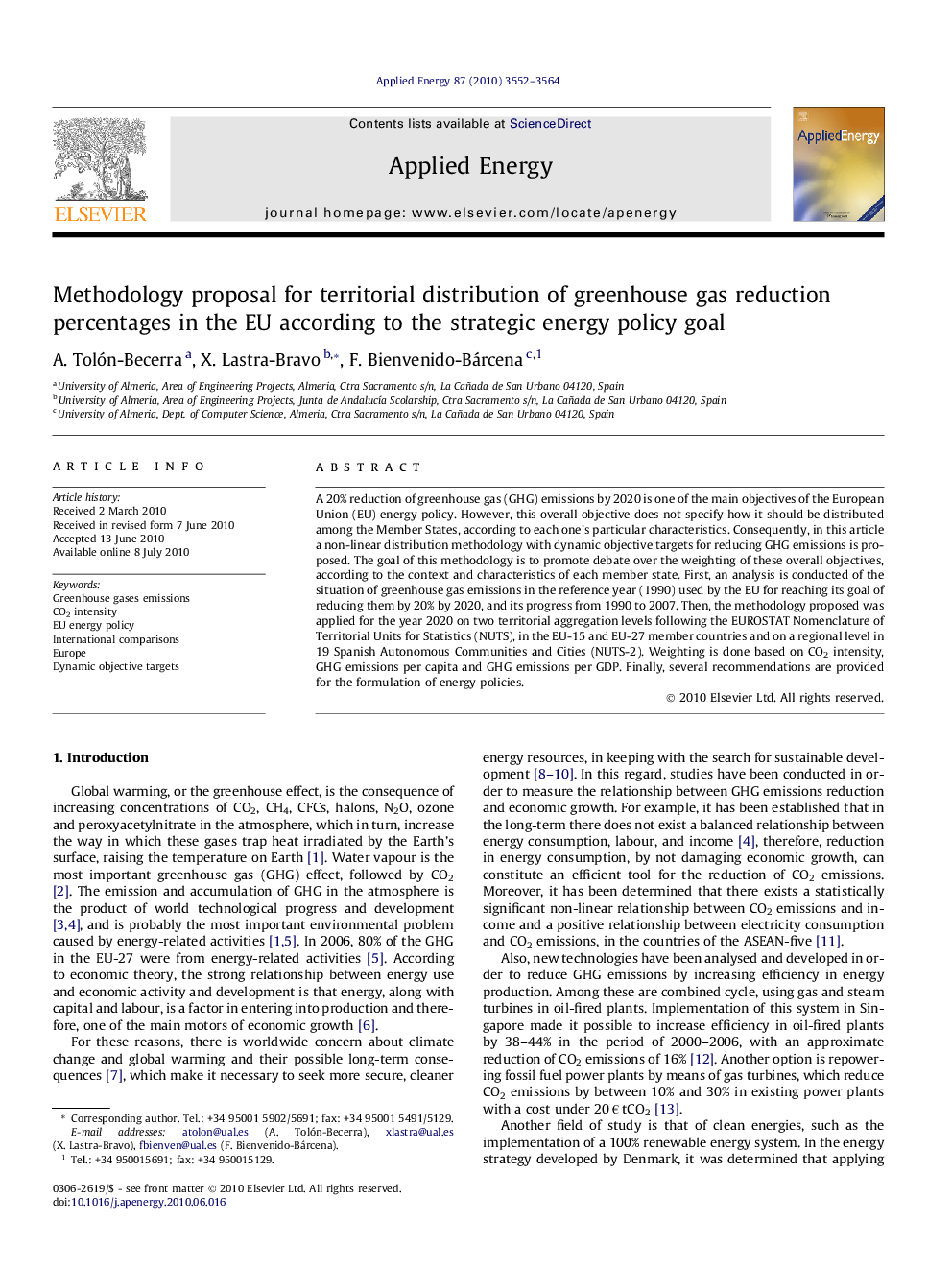| Article ID | Journal | Published Year | Pages | File Type |
|---|---|---|---|---|
| 244560 | Applied Energy | 2010 | 13 Pages |
A 20% reduction of greenhouse gas (GHG) emissions by 2020 is one of the main objectives of the European Union (EU) energy policy. However, this overall objective does not specify how it should be distributed among the Member States, according to each one’s particular characteristics. Consequently, in this article a non-linear distribution methodology with dynamic objective targets for reducing GHG emissions is proposed. The goal of this methodology is to promote debate over the weighting of these overall objectives, according to the context and characteristics of each member state. First, an analysis is conducted of the situation of greenhouse gas emissions in the reference year (1990) used by the EU for reaching its goal of reducing them by 20% by 2020, and its progress from 1990 to 2007. Then, the methodology proposed was applied for the year 2020 on two territorial aggregation levels following the EUROSTAT Nomenclature of Territorial Units for Statistics (NUTS), in the EU-15 and EU-27 member countries and on a regional level in 19 Spanish Autonomous Communities and Cities (NUTS-2). Weighting is done based on CO2 intensity, GHG emissions per capita and GHG emissions per GDP. Finally, several recommendations are provided for the formulation of energy policies.
